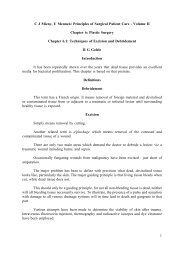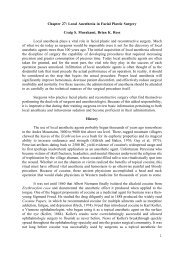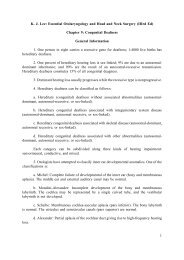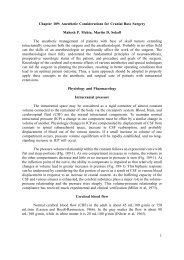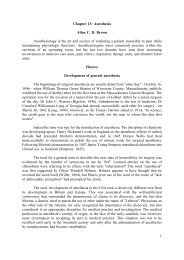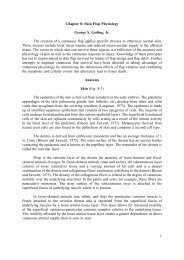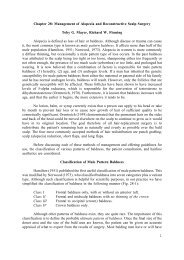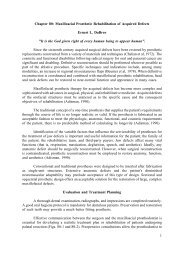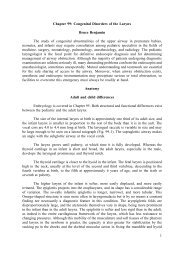You also want an ePaper? Increase the reach of your titles
YUMPU automatically turns print PDFs into web optimized ePapers that Google loves.
1. Sternocleidomastoid flap (SCM).2. Trapezius flap (TPZ).3. Pectoralis major (PM).4. Latissimus dorsi (LD).General Considerations Regarding Myocutaneous Flaps1. The skin overlying the muscle bulk is supplied by both cutaneous arteries andmusculocutaneous arteries.2. Myocutaneous flaps may be used without delay.3. Myocutaneous flaps add bulk when extirpative surgery has left a large (and oftendeep) defect.10).4. Myocutaneous flaps may be used in a field previously treated with radiation (see5. The myocutaneous flap may become a "functional flap" as it is employed inesophageal reconstruction.6. Myocutaneous flaps may be used to transfer underlying bone which can be used forfacial reconstruction.7. Reported epithelial loss in skin paddles has been associated with minimal morbidity;fistulization is uncommon.8. Myocutaneous flaps can be performed with relative ease by the skilled surgeon.9. Myocutaneous flaps are readily available and reliable.10. These flaps may be radiated postoperatively.Sternocleidomastoid Myocutaneous FlapsAnatomyThis muscle arises from two heads: a round tendonous head that takes off from themanubrium on its anterosuperior surface and a muscular head from the medial upper third ofthe clavicle. The anterior cervical triangle fascia splits to envelop the muscle. This is of majorimportance in conservation surgery. The two heads unite to form a common body whichpasses superiorly and posteriorly to insert on the mastoid process. Small slips of muscle attachto the superior nuchal line of the occipital bone.10




